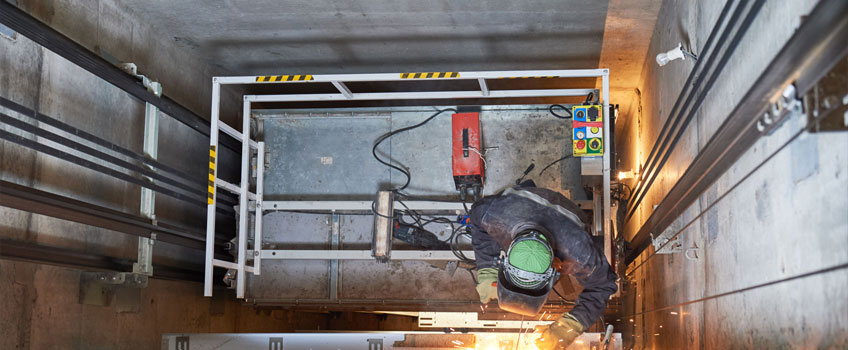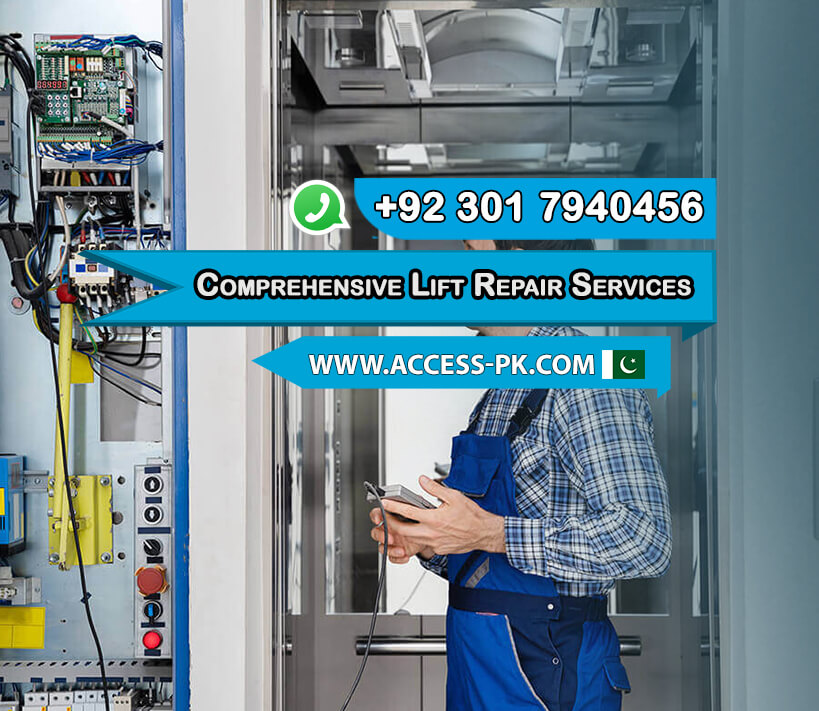Find Expert Lift Maintenance Services: Ideal Lift Repair Companies Near Me
Find Expert Lift Maintenance Services: Ideal Lift Repair Companies Near Me
Blog Article
Comprehensive Overview to Lift Solutions and Their Upkeep
Browsing the intricate world of elevator systems and their upkeep is a task that requires precision and expertise. From the various types of elevator systems in use to the thorough adherence to safety and security regulations, the maintenance of these vertical transport devices is a complex endeavor.
Types of Lift Systems
The most typical kinds include hydraulic lifts, grip lifts, machine-room-less lifts, and vacuum elevators. Hydraulic elevators are optimal for low-rise structures and utilize a hydraulic piston to move the lift vehicle. Machine-room-less elevators are a space-saving choice as they do not call for a separate equipment area for the elevator equipment.
Each sort of elevator system has its own advantages and drawbacks, making it essential for structure proprietors and designers to thoroughly consider their particular demands prior to choosing one of the most suitable choice. Factors such as building elevation, area accessibility, energy performance, and budget constraints all play a substantial duty in determining the very best lift system for a specific building.
Usual Upkeep Problems
Routine upkeep of lift systems is important to ensure smooth procedure and lengthen their life expectancy. In spite of regular upkeep, elevator systems can still run into typical maintenance concerns that require to be promptly addressed to avoid disruptions in service. Normal inspections and proactive maintenance can help identify and fix these typical maintenance issues before they rise and influence the total performance of the elevator system.
Safety Rules and Conformity
Abiding by rigorous safety and security guidelines and making sure compliance with industry criteria are extremely important for keeping the operational integrity of lift systems. Elevators undergo a thorough collection of safety laws to secure travelers, maintenance employees, and the public. Regulatory bodies such as the Occupational Security and Health And Wellness Management (OSHA) in the United States and the European Lift Organization (ELA) in Europe establish standards that cover different aspects of lift design, setup, maintenance, and operation.
Conformity with these regulations is not just a lawful requirement however also a moral obligation for building owners and lift maintenance firms. Failure to fulfill security criteria can lead to penalties, lawful responsibilities, and, most significantly, jeopardize the safety of individuals utilizing the elevator. Normal evaluations, upkeep checks, and adherence to safety methods laid out in the regulations are important to make sure the effective and risk-free procedure of elevator systems. By focusing on safety laws and compliance, stakeholders can maintain the trust of the public and alleviate prospective dangers connected with lift use.
Best Practices for Maintenance

Structure proprietors need to also think about investing in innovation upgrades to enhance the performance and safety of their elevator systems. By complying with these best techniques, lift systems can run smoothly and safely, giving trusted vertical transportation for owners.

Advanced Technologies for Performance
Carrying out cutting-edge innovations in elevator systems can dramatically improve operational efficiency and traveler experience. lift engineer course. Among the essential developments in lift technology is the introduction of location control systems. These systems enable travelers to input their wanted flooring before getting in the lift, which then directs them to the most efficient car. By enhancing and lessening unneeded stops traveling paths, location control systems lower wait times and congestion in high-traffic buildings.
In addition, the combination of clever sensors and predictive upkeep capabilities has actually transformed lift upkeep. These sensing units can discover potential problems before they rise, allowing aggressive maintenance interventions and minimizing downtime. In addition, making use of energy-efficient components and regenerative drives helps in reducing power usage and operating expenses in lift systems.
Furthermore, the implementation of cloud-based monitoring and remote diagnostics allows for real-time page monitoring of lift performance and instant troubleshooting of any kind of breakdowns. This proactive technique not only boosts system reliability yet additionally enhances the general customer experience by ensuring smooth and uninterrupted elevator procedures.
Verdict
In verdict, understanding the different types of elevator systems, typical upkeep concerns, safety policies, best upkeep methods, and progressed technologies for performance is crucial for ensuring the smooth operation of elevators. By sticking to safety and security policies and implementing best techniques for upkeep, building owners can prolong the life expectancy of their elevator systems and ensure the security of passengers. It is vital to stay updated on the most recent developments in elevator modern technology to enhance effectiveness and reliability.
The most common types consist of hydraulic lifts, grip elevators, machine-room-less elevators, and vacuum cleaner lifts. Hydraulic lifts are excellent for low-rise structures and make use of a hydraulic piston to relocate the elevator auto. Machine-room-less lifts are a space-saving option as they do not require a separate equipment room for the elevator machinery. Routine inspections and this post proactive upkeep can assist determine and fix these common upkeep problems before they escalate and impact the overall performance of the lift system.

Report this page